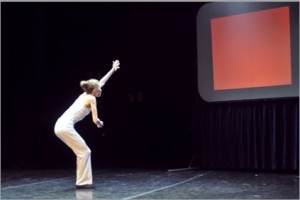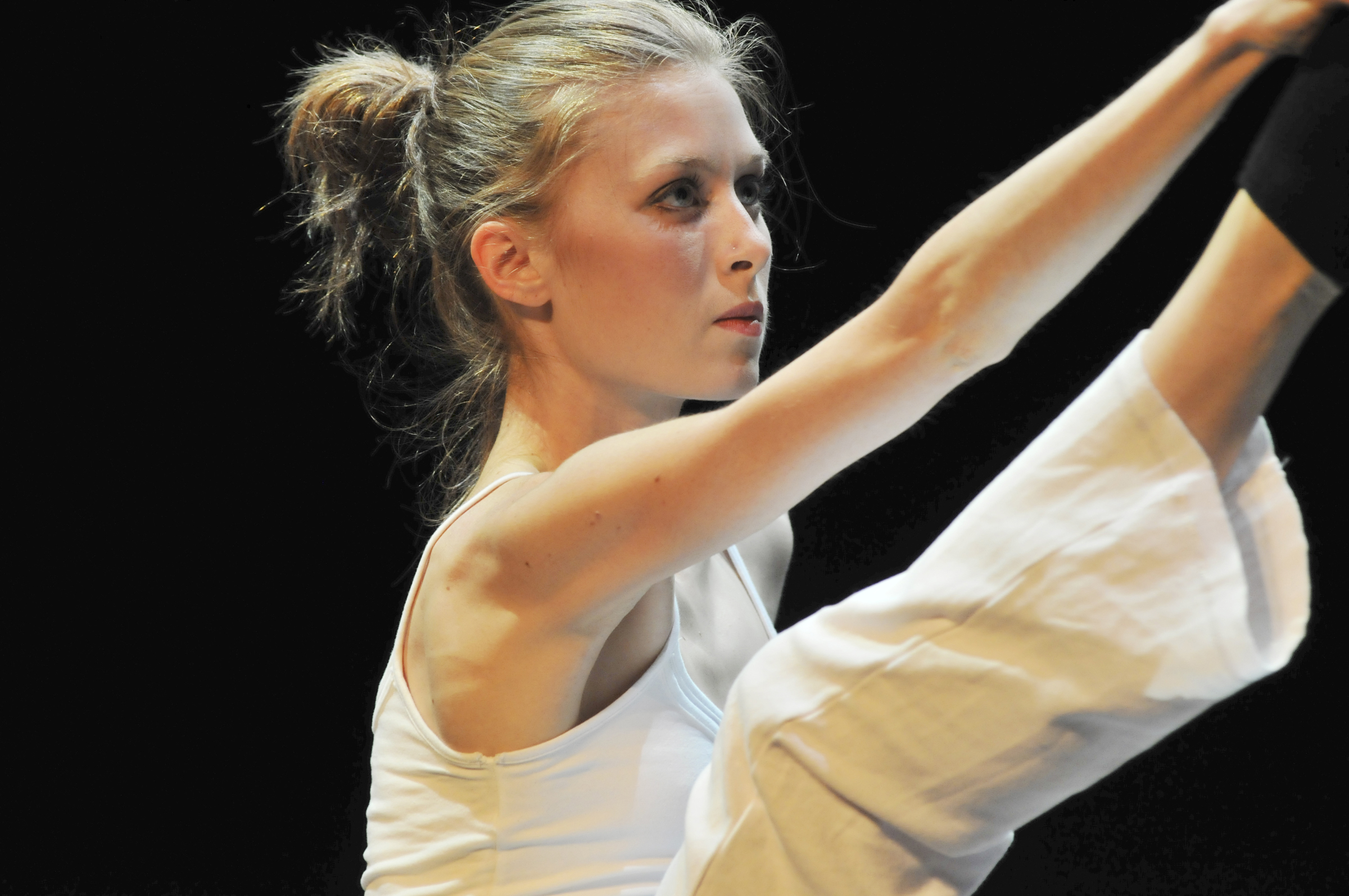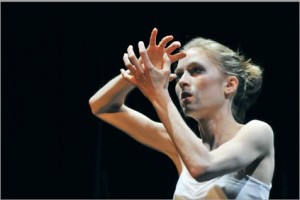
This weekend I presented at the 7th Annual National Conference of the American Synesthesia Association in Toronto, Ontario, Canada. I performed a solo dance entitled “Color Play,” choreographed as part of my MA work at the University of Limerick. This choreography is the beginning of what I hope will become future research exploring synesthesia in dance, the language of dance, and dance perception and cognition.
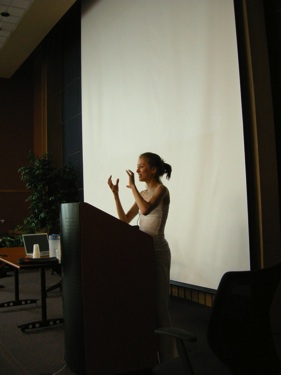
Read a review of the performance by Amy Ione at the University of California, Berkeley.
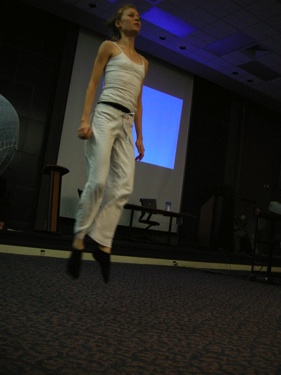
“Color Play” is the second in a series of dances exploring dance perception, the first being “Sound Play,” which was created and performed in Fall 2007 at the University of Limerick. “Sound Play” is an Irish dance choreography that aims to create a visualization of space as a “ball” of sound that moves from corner to corner of the room through a surround-sound speaker system. The music is “The Eccentric” by Shooglenifty, with sound manipulation by John Greenwood.
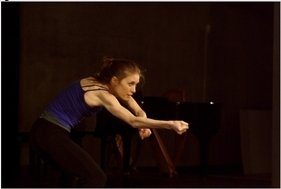
The abstract below describes a summary of the motivation for and the goals of “Color Play”. The dance is a contemporary choreography informed by Irish dance vocabulary, with music Music For 18 Musicians: Pulses (tracks 1 and 7) by Steve Reich and voice-over text by myself.
Kathleen A. Spanos, University of Limerick, Ireland
Color Play: Synesthesia in Irish DanceUnlike other art forms dance is uniquely multi-sensory in that it exists in both space and time simultaneously, with a literal mixing of visual, auditory and kinesthetic stimuli in dance perception. This is particularly true in Irish dance, which is highly rhythmical and thus consists of an additional acoustic element. As an Irish step dancer I experience synesthesia in the form of colored movements and rhythms. I have created a choreography in which I deconstruct some Irish dance vocabulary by way of synesthesia and that is built around four basic movements, each of which is paired with a primary color.
In dance the basic units of movement are kinemes, morphokines and motifs, which in language translate to phonemes, morphemes and phrases. Dance is similar to language in that both communicate something by relying on our ability to understand the syntax of these basic elements. The “grammatical” rules of dance are applied to its minimal units so that we can understand the overall concept or symbol communicated by the dance. In dance perception a fusion of the senses is required to understand an overall concept and this is often referred to as a symbolization process. In my choreography, this process is illustrated through overt colored-movement associations.
For a select group of people, the basic components of language give rise to synesthetic experiences. Because dance is analogous to language in the sense that it can be broken down into minimal units it stands to reason that there can exist a form of synesthesia that similarly associates colors with dance elements. In my choreography I will demonstrate a practical analysis of colored-movement associations with the aim of elucidating the symbolization process involved in dance perception.
